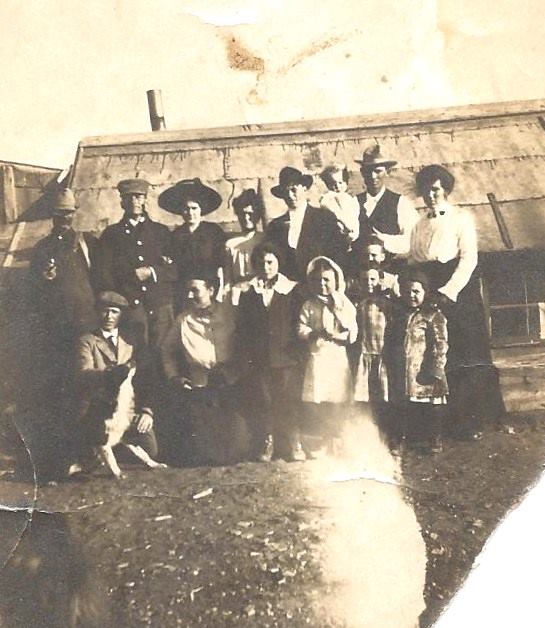I always thought this was such an interesting photograph. In 1893, the United States Government opened up some Native American lands for settlement in northern Oklahoma. Since it was mostly Cherokee land, the event was called the Cherokee Land Rush. It was a good opportunity to get good native grassland FREE. All you had to do was stake out our 160-acre claim, build a structure within in five years, and do some fencing.
Several of my Clark and Miller relatives participated. The event was held on September 16, 1893. According to Wikipedia, 6.5 million acres were available and over 100,000 people showed up to make the “race.” The participants were lined up along a line on the northern boundary of the parcel, and at exactly noon, the military let them all go. There were soldiers stationed throughout the land and helped settle disputes and also helped the participants find corner markers left by surveyors.
This photograph was among those belonging to my paternal grandmother, Mabel Rachel (Jones) Clark. She was born in 1893, and she knew that there were members of the Clark family in the photograph (my grandfather’s mother and step father were among those in the race) but she didn’t know the names of the people. She knew only that this was a gathering of relatives and friends held on that first Christmas after the Cherokee Land Rush.
A couple of years later, she and her grandparents made a trip to visit the relatives and she told me that the sod house was quite comfortable. She said that it was divided into four rooms with fabric material fastened to the ceiling. There was a kitchen, living room area and two bedrooms.
Men “sod busters” would come in with steel-tipped plows and would plow long furrows, turning over 6″ to 8″ chunks of prairie. These were cut into blocks that were about 12″ wide by 24″ long and 6 ” or 8″ thick. Then they were laid up just like brick with mud and sand mixed to make a mortar. Flat boards were laid over the four walls to form the ceiling, and more sod was laid over the boards to make a sod/grass roof. Grandmother said this is the most common form of dwelling built to “prove up” claims and was used until a frame or stone house could be built.
How I wish I knew the names of these people, who were willing to withstand blazing summers and frigid winters to try and make a living for their families. Every story is supposed to have a happy ending, and I do know that my Great Great Grandmother Clark/Miller, her husband, Herman Miller and their family did make a go of it. There are still many relatives living around Ponca City and El Reno, Oklahoma to prove it.
